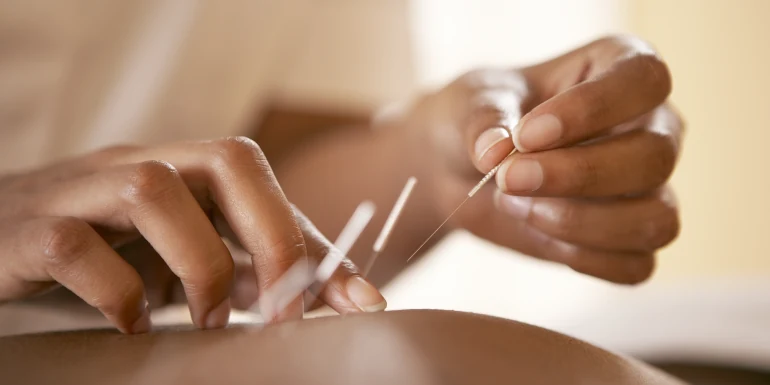Boost the recovery process with homeopathy
Traditional homeopathy is a form of complementary medical treatment. It tries to counteract the cause of an ailment in a holistic way. This includes treating acute and chronic diseases, as well as the consequences of accidents.

Traditional homeopaths aim to stimulate the self-healing powers of the body with the help of homeopathic medication. This is how they try to maintain the balance between body, mind and soul – or in the case of complaints, restore it.
The basic principle of homeopathy
Homeopathy has been around since ancient times. Traditional homeopathy, as we know it today, emerged at the beginning of the 19th century. The doctor, pharmacist and chemist Samuel Hahnemann is considered to be the founder of this alternative treatment method. In experiments – some of which were self-experiments – he found that each homeopathic medication, when given to a sick person, could heal complaints that it would otherwise cause in a similar form in a healthy person. This similarity is the basic principle of homeopathy: like cures like.
The principle of potentisation is also a part of homeopathy. The substances from which the remedy is produced are diluted several times and shaken with water and alcohol, or are triturated with sugar. The more diluted the homeopathic remedies, the greater their effect, or potency. The name indicates the potency of each remedy. For example, D6 means a dilution equivalent to about one drop in 50 litres of water.
What are homeopathic remedies made from?
Homeopathic remedies aren’t just made from plant-based substances. They can also contain animal products (e.g. from a bee sting) or organic (e.g. table salt) and inorganic substances (e.g. gold).
The substances are often poisonous, which is why they are heavily diluted when the remedies are produced. At the end of the production process, they contain only a fraction of the given substance.
Various forms of homeopathic remedies are available: for example, as drops, based on water and alcohol, or as tablets or globules. These little balls made from lactose are the most popular dosage form. They contain only small amounts of the active substance.
Arnica globules are a popular example. A remedy can be made from the dried roots of the Arnica montana plant that may rapidly sooth the pain of minor injuries, e.g. a sprain, and prevent potential inflammation. Arnica globules can also be administered for arthritis, arteriosclerosis or concussion.
Our services to keep you healthy
With COMPLETA supplementary insurance, 75% of the costs for complementary medicine and remedies during outpatient treatment are covered. You will receive 100% of the costs for inpatient treatment, up to a maximum of CHF 5,000 per calendar year.
What happens during homeopathic treatment
The initial consultation for homeopathic treatment (first medical history) consists of various parts. In the initial consultation, homeopaths ask about your medical history, your life situation and your complaints. They also look at external characteristics such as complexion, swelling, sight, etc. The appearance and behaviour of a patient already gives the homeopath valuable information for choosing the medication. If the treatment is carried out in a doctor’s surgery, an additional physical examination can be conducted, if required. In traditional homoeopathy, blood tests or other tests are not carried out.
An overall picture of the patient is gathered through the medical history, which forms the foundation for determining the homeopathic remedy that is suitable for the individual. Once all symptoms have been considered and evaluated, the therapist chooses a suitable remedy from a symptom encyclopaedia.
The chosen homeopathic medication is individually tailored to the patient. If someone is suffering from diarrhoea, they won’t just get a remedy that stops the diarrhoea, as a holistic approach is taken towards the patient. They will receive a remedy that is individually tailored to their symptoms and their life situation. This means that for similar symptoms, different remedies can be prescribed for each illness.
After the initial consultation, the frequency of consultations depends on the severity of the complaints. For chronic complaints, a consultation should take place every three to six weeks. The homeopath continually checks the effectiveness of the remedy and adjusts the dosage when required. The better the patient feels, the less often the consultations are – until the treatment has worked and the patient is healthy again.
Do you have any questions about homeopathy?

Articles about this topic
Disclaimer
The health information provided here is of a general nature and is intended exclusively for information purposes. It is not a substitute for medical advice. In the event of a health problem, you should always consult a doctor or medical specialist.
Do you have questions?
We're here to help.

